Abstract
BACKGROUND. From 1986 to 1987 the Carter Center of Emory University joined with the Centers for Disease Control (CDC) to develop a new, probability-based, adult health risk appraisal (HRA) instrument for the public domain. This new instrument is compared with the CDC HRA version to determine which is a more accurate predictor of mortality. METHODS. We compared predicted mortality risks from the CDC HRA and the Carter Center HRA with the observed mortality among 3135 smokers and never-smoking persons, aged 25 to 60, followed from 1959 to 1979 as part of the Tecumseh Community Health Study. RESULTS. When individuals were classified according to the difference between their actual age and risk age, for the CDC HRA, there was a progressively increasing risk of 10-year mortality as the difference increased. The Carter Center HRA did not show this trend. An analysis using relative operating characteristic curves showed that the mortality risk predictions for both programs were very similar for men and women. However, differences between actual age and risk age for the two programs were not similar for men or women, particularly older men. Therefore, actual age minus risk age for the CDC program was a more accurate predictor of 10-year mortality than was this difference for the Carter Center program. CONCLUSIONS. The results from both types of analyses suggest that the validity of risk ages obtained from the Carter Center version may not be sufficient to justify updating programs for those currently using the CDC instrument.
Full text
PDF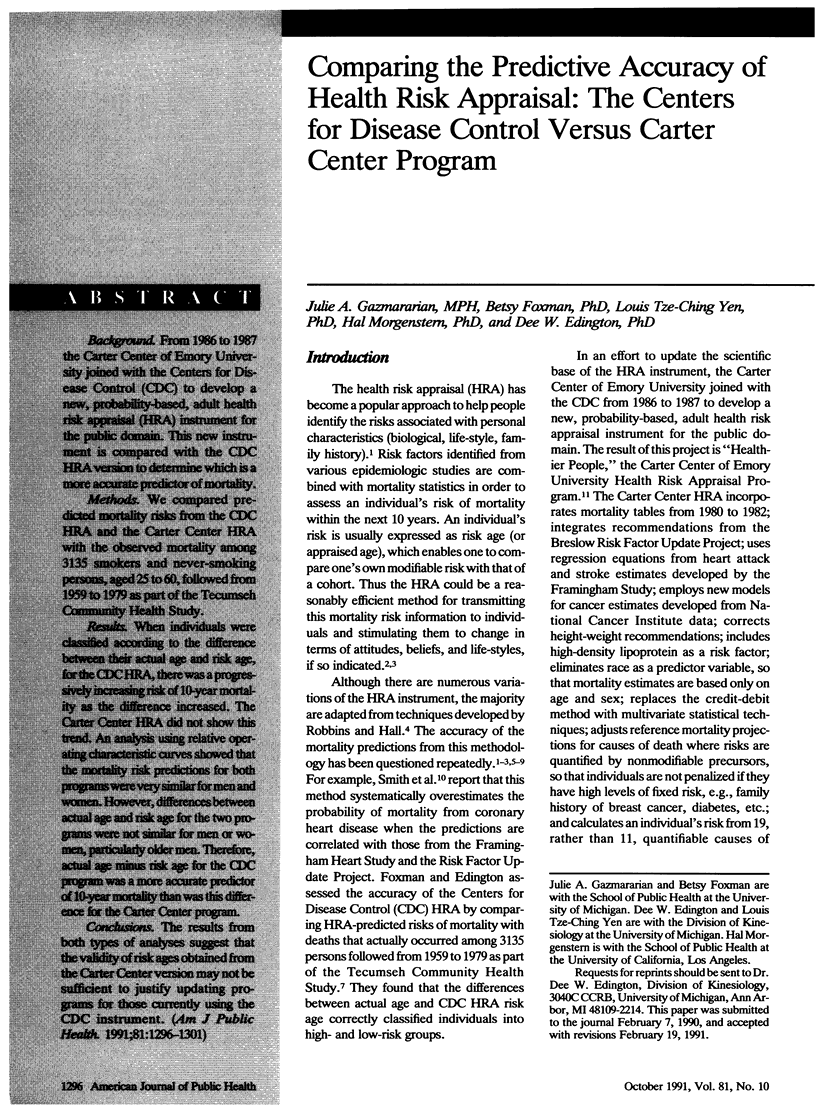
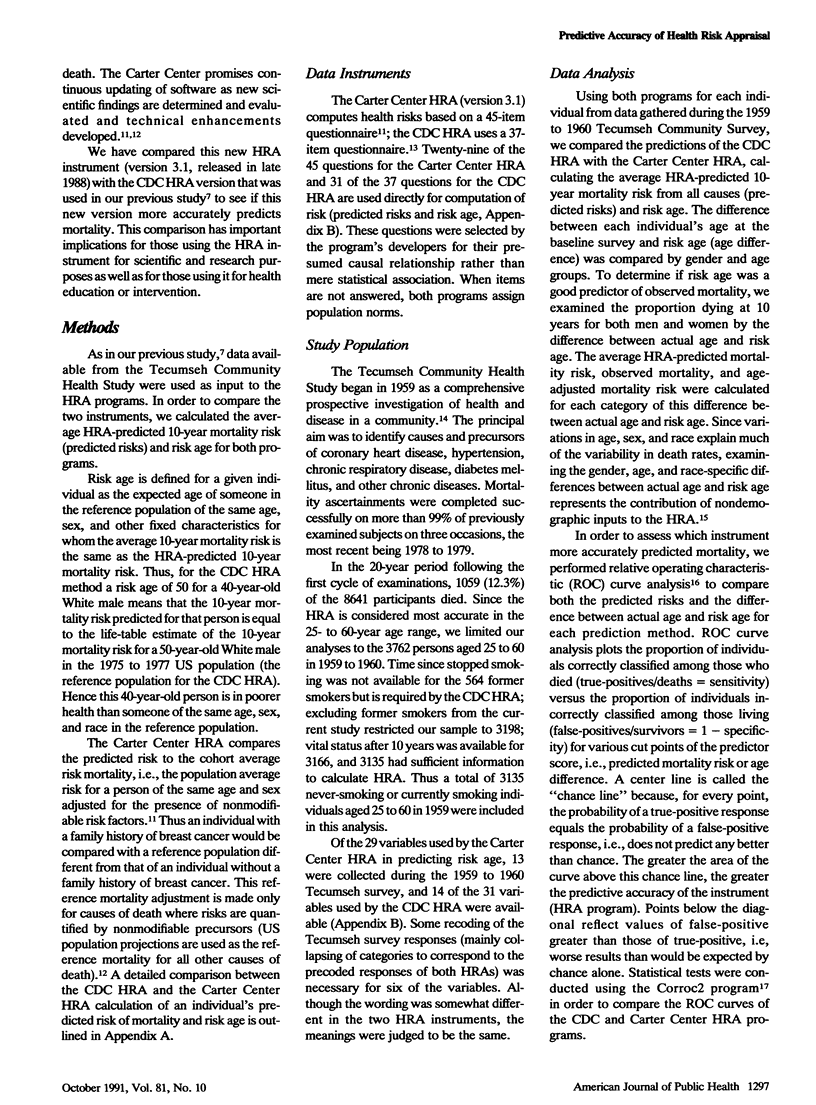
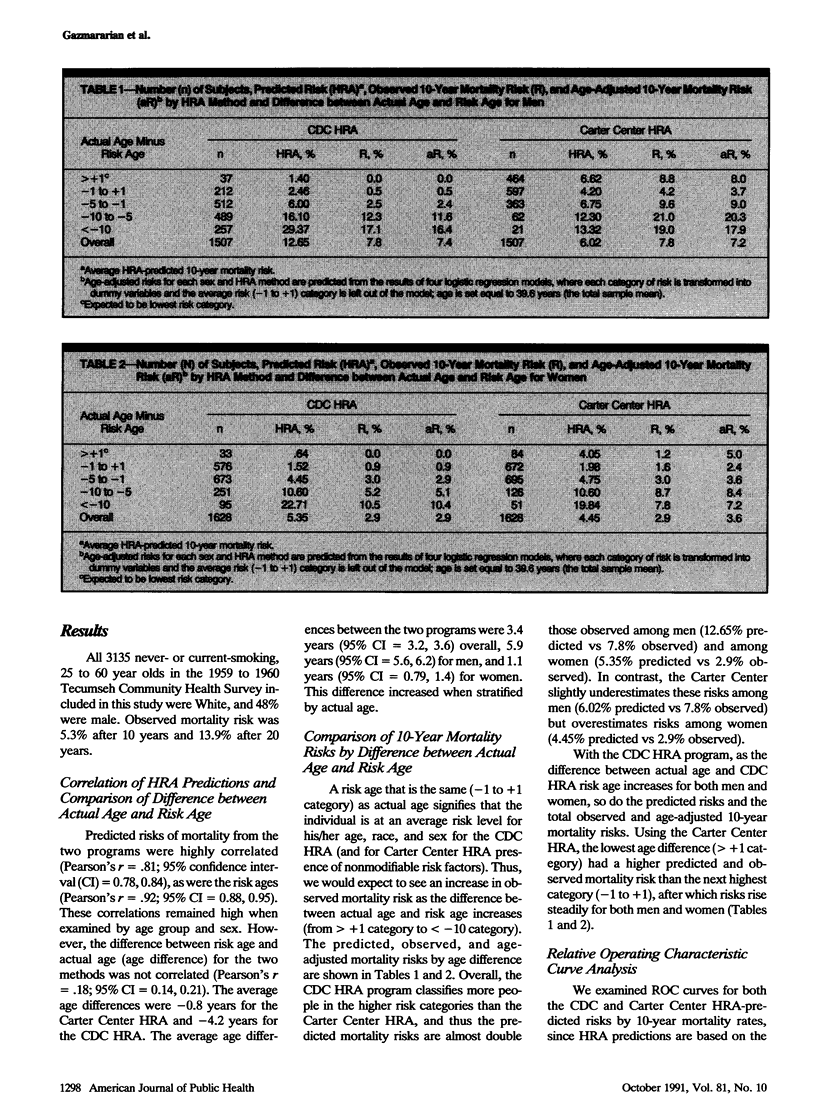
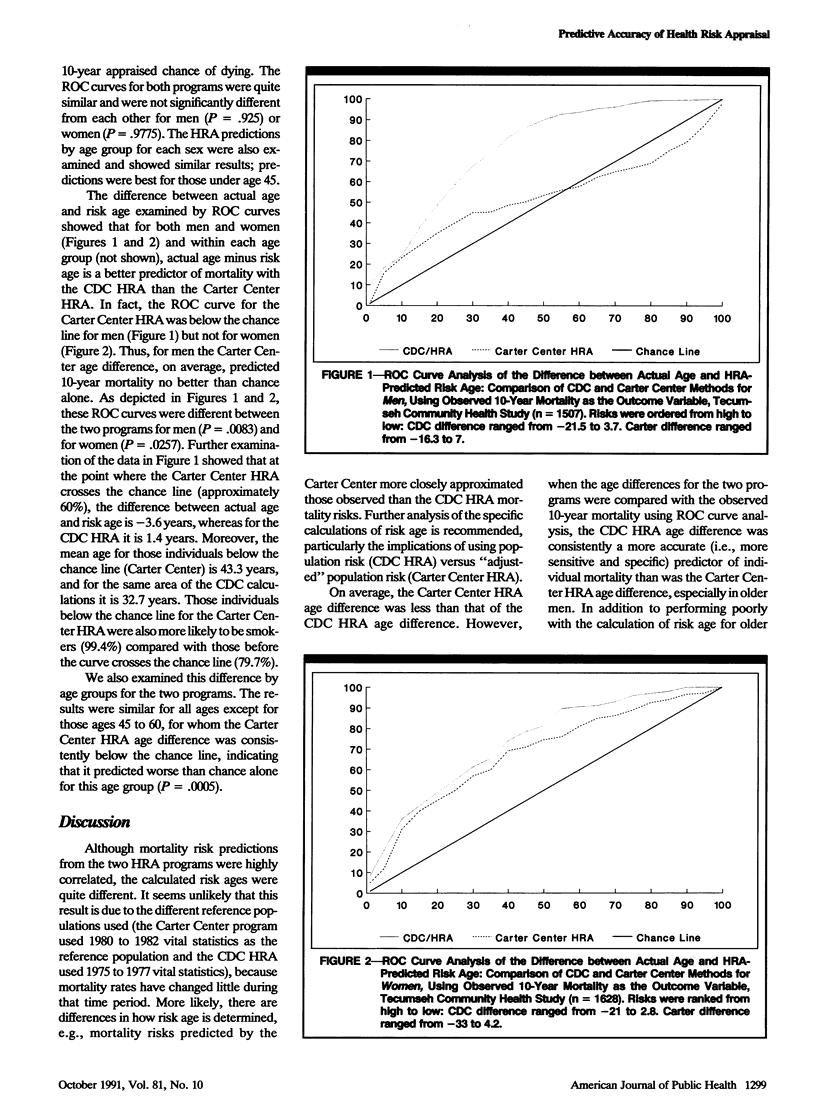
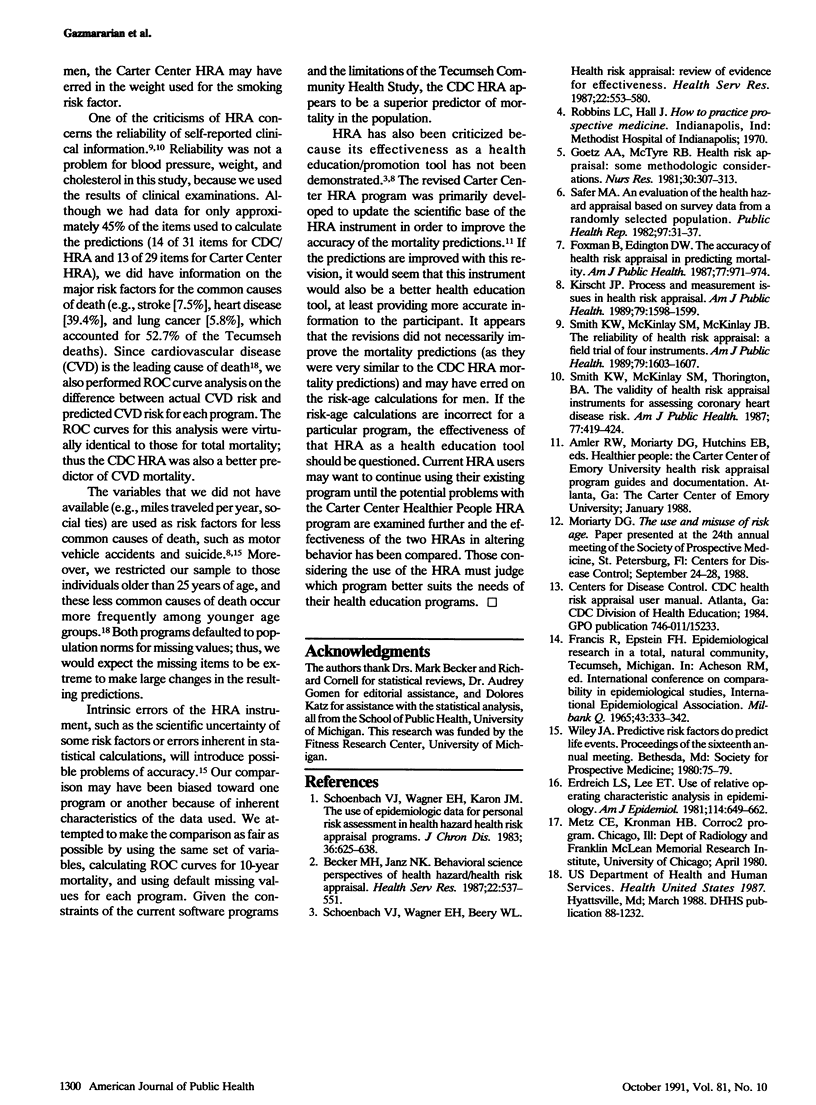
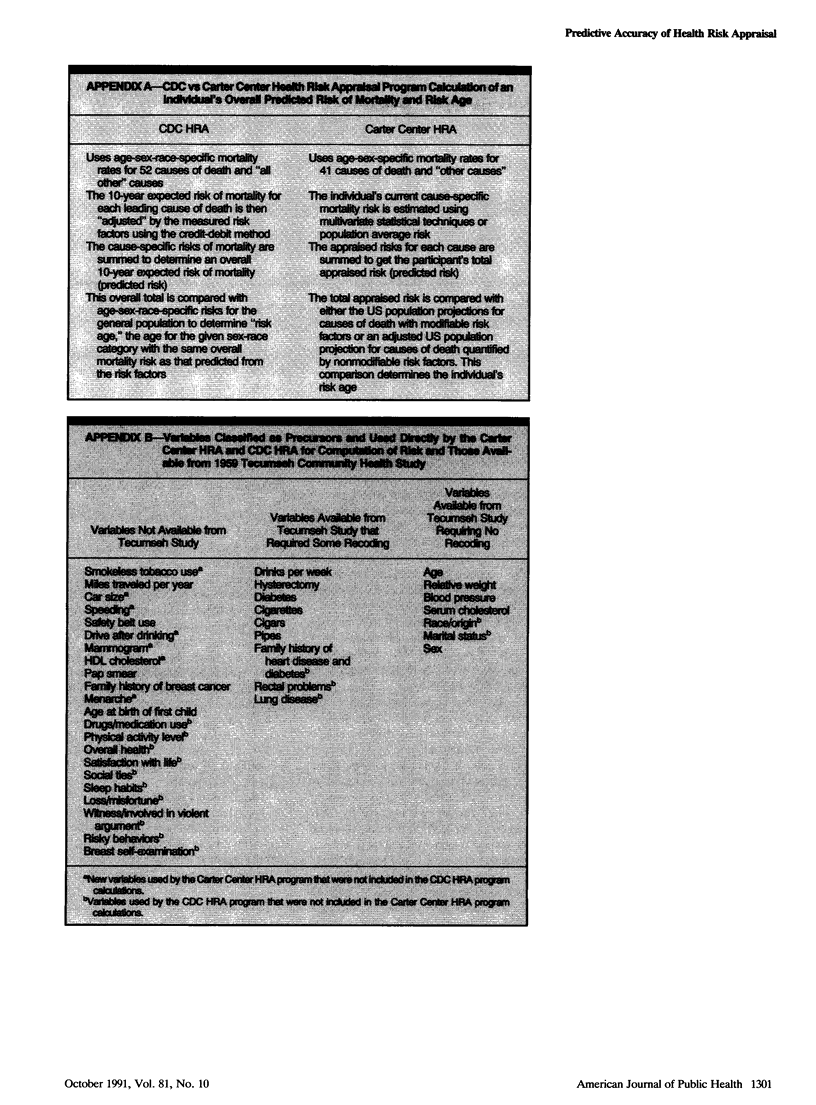
Selected References
These references are in PubMed. This may not be the complete list of references from this article.
- Becker M. H., Janz N. K. Behavioral science perspectives on health hazard/health risk appraisal. Health Serv Res. 1987 Oct;22(4):537–551. [PMC free article] [PubMed] [Google Scholar]
- Erdreich L. S., Lee E. T. Use of relative operating characteristic analysis in epidemiology. A method for dealing with subjective judgement. Am J Epidemiol. 1981 Nov;114(5):649–662. doi: 10.1093/oxfordjournals.aje.a113236. [DOI] [PubMed] [Google Scholar]
- FRANCIS T., Jr, EPSTEIN F. H. SURVEY METHODS IN GENERAL POPULATIONS. STUDIES OF A TOTAL COMMUNITY. TECUMSEH, MICHIGAN. Milbank Mem Fund Q. 1965 Apr;43:333–342. [PubMed] [Google Scholar]
- Foxman B., Edington D. W. The accuracy of health risk appraisal in predicting mortality. Am J Public Health. 1987 Aug;77(8):971–974. doi: 10.2105/ajph.77.8.971. [DOI] [PMC free article] [PubMed] [Google Scholar]
- Goetz A. A., McTyre R. B. Health risk appraisal: some methodologic considerations. Nurs Res. 1981 Sep-Oct;30(5):307–313. [PubMed] [Google Scholar]
- Kirscht J. P. Process and measurement issues in health risk appraisal. Am J Public Health. 1989 Dec;79(12):1598–1599. doi: 10.2105/ajph.79.12.1598. [DOI] [PMC free article] [PubMed] [Google Scholar]
- Safer M. A. An evaluation of the health hazard appraisal based on survey data from a randomly selected population. Public Health Rep. 1982 Jan-Feb;97(1):31–37. [PMC free article] [PubMed] [Google Scholar]
- Schoenbach V. J., Wagner E. H., Beery W. L. Health risk appraisal: review of evidence for effectiveness. Health Serv Res. 1987 Oct;22(4):553–580. [PMC free article] [PubMed] [Google Scholar]
- Schoenbach V. J., Wagner E. H., Karon J. M. The use of epidemiologic data for personal risk assessment in health hazard/health risk appraisal programs. J Chronic Dis. 1983;36(9):625–638. doi: 10.1016/0021-9681(83)90079-6. [DOI] [PubMed] [Google Scholar]
- Smith K. W., McKinlay S. M., McKinlay J. B. The reliability of health risk appraisals: a field trial of four instruments. Am J Public Health. 1989 Dec;79(12):1603–1607. doi: 10.2105/ajph.79.12.1603. [DOI] [PMC free article] [PubMed] [Google Scholar]
- Smith K. W., McKinlay S. M., Thorington B. D. The validity of health risk appraisal instruments for assessing coronary heart disease risk. Am J Public Health. 1987 Apr;77(4):419–424. doi: 10.2105/ajph.77.4.419. [DOI] [PMC free article] [PubMed] [Google Scholar]


